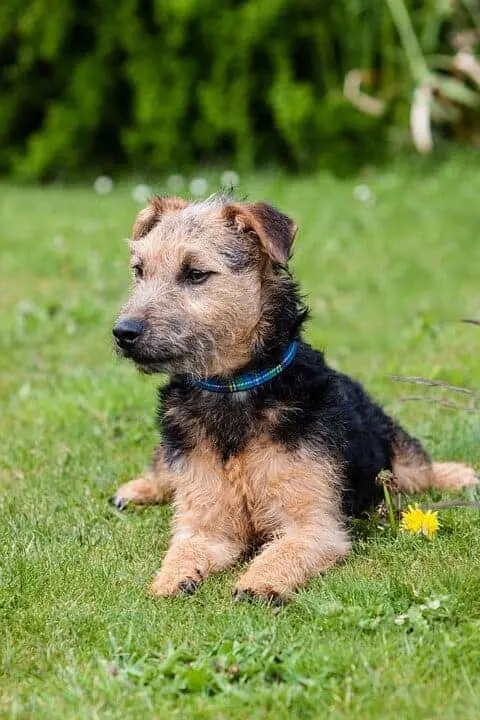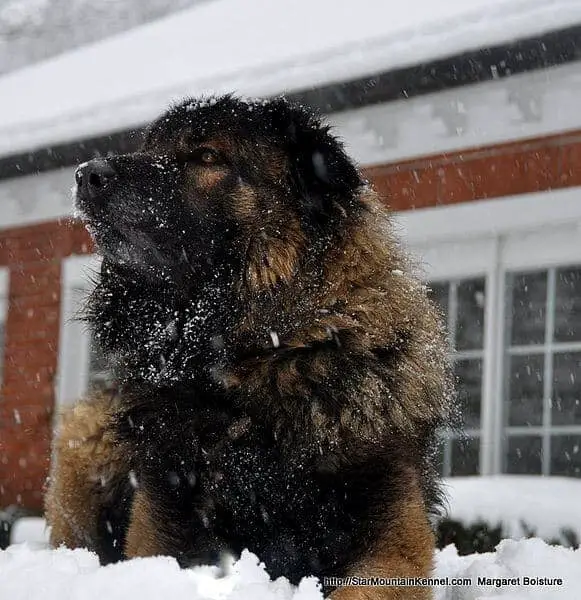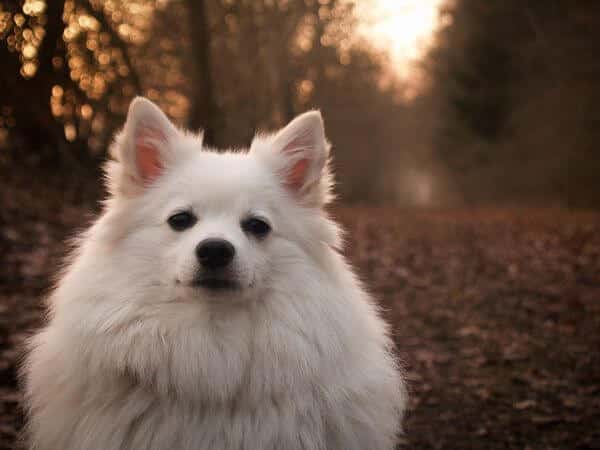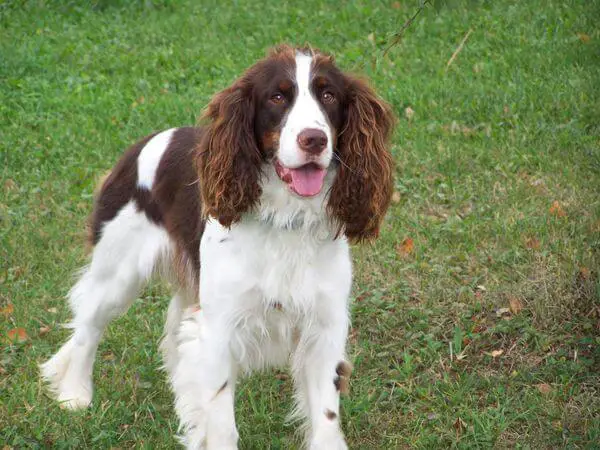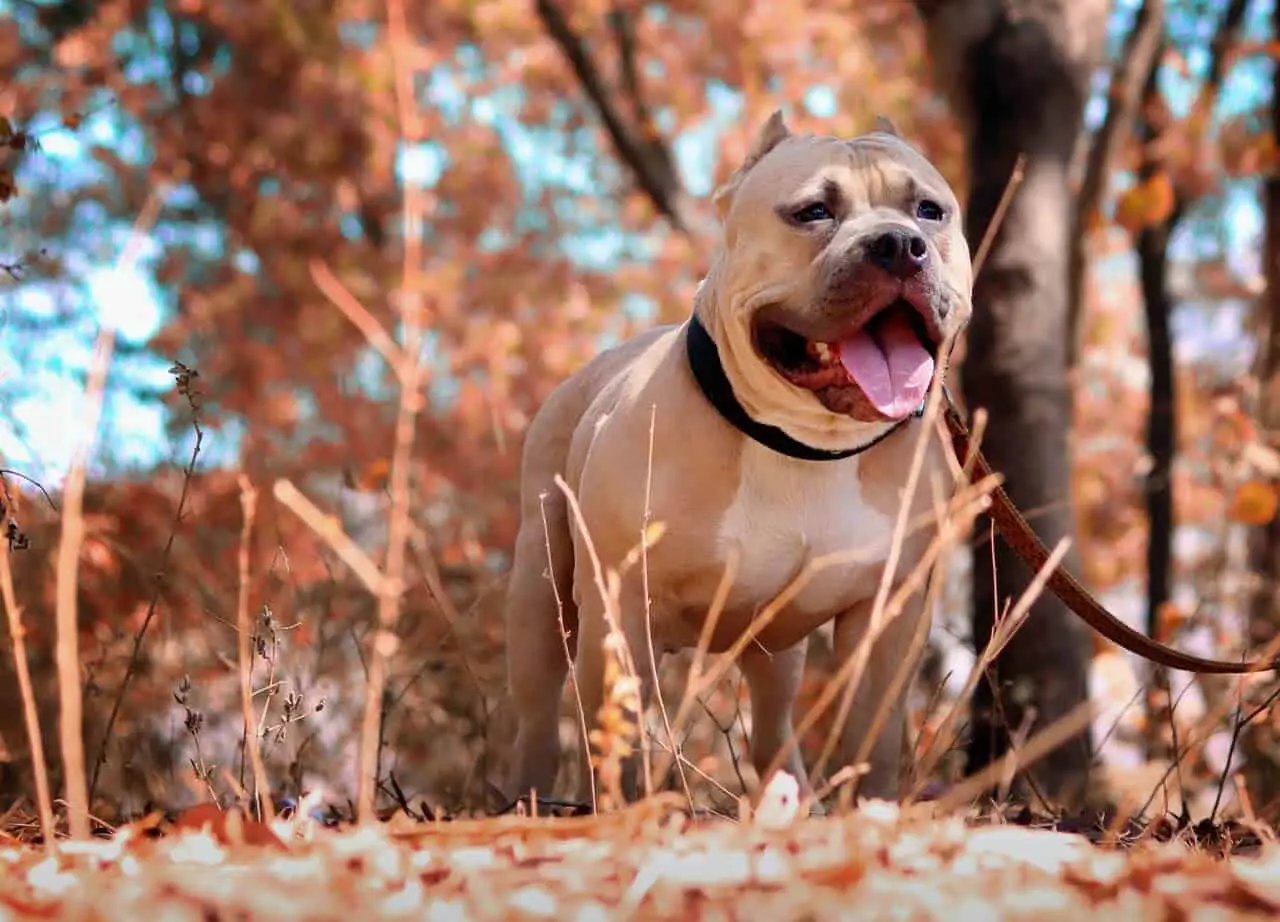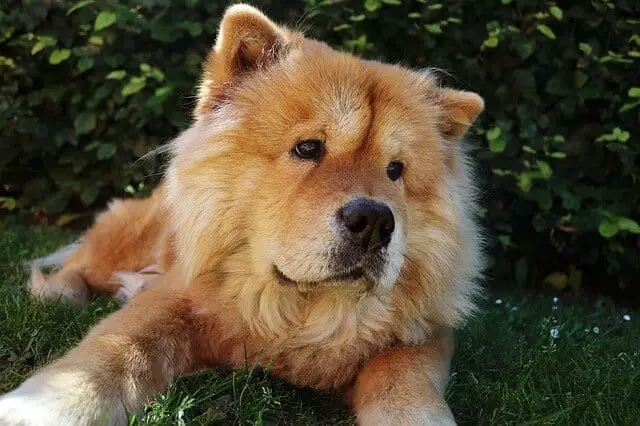Lakeland Terrier
A Lakeland Terrier has no idea whatsoever that they are actually a small dog and will walk around like they own their castle, full of cockiness and confidence. Originally from the Lake District of England, this feisty canine overflows with self-confidence yet is a lively and friendly companion.
Lakeland Terriers are small, boxy and rugged and their slender body shape was bred to allow them to more easily get into dens and cavernous areas after their prey. The front of the face and legs of a Lakeland Terrier gives it the distinctive furnishings, or additional hair, that this breed is known for. They have a very rectangular head, small, oval eyes, V-shaped ears that fold over and often have a long tail that is held high. They have a double coat with a thick, rough topcoat that comes in blue, black, liver, red or wheaten. Saddle markings are common, in which a second colour can cover the neck, back, sides of the dog and down to the tail.
Anyone that has had a terrier breed of any type before knows of their characteristic clown-like sense of humour and unbounded courage and confidence. Terriers, in general, are also known to chase small animals so socialization from an early age is required especially if they are to be homed with other animals. This dog is high energy and mischievous so only consider this breed if you have the necessary time to exercise them daily and will have people around to entertain them and be at their service. Lakeland Terriers might be more suited to a more experienced dog owner as require a firm, but fair, hand with training. Alternatively, this breed does well with obedience and agility training and the socialization of a set of classes will likely do wonders.
Lakeland Terrier Key Information
Height: 13 – 14 inches
Weight: 15 – 17 pounds
Life span: 12 – 15 years
Breed family: Terrier
Exercise requirements: High
Good with children: Yes
Area of origin: England
Also Known As: Lakies
History
Originally coined with the names of either Westermoreland, or Cumberland Terrier, the present-day Lakeland Terrier originates from Cumberland County in the Lake District of England. The gorgeous rolling hills and rugged terrain of this part of the United Kingdom had an issue with foxes decimating the local lamb population so farmers bred Lakeland Terriers with the needed temperament and size to chase down and eradicate foxes and vermin. The bountiful courage, slender body and resilience are still traits that this breed is known for. Miners and other working-class men of the era also used to use Lakeland Terriers for badger digging or finding rabbits so don’t be surprised if you see this breed digging up the back garden after a mouse. Lakeland Terriers were also originally called Patterdale Terriers but these should not be confused with the present-day Patterdale as they are distinct breeds.
Lakies, as the Lakeland Terrier is affectionately known as, are one of the oldest known terrier breeds. The Lakeland Terrier Association was formed in England in 1921 and the American Kennel Club first registered the breed in 1934. The infamous Lakeland Terrier, Champion Stingray of Derryabah, was one of only two dogs to ever win both the Westminster Show in New York and Crufts in London.
Personality
Lakeland Terriers are a whole lot of dog in a fairly small package, though they certainly believe that they are the biggest and best dog on the block. The self-confidence of this breed is obvious in their bold strut though they are very playful and friendly, especially with their own family. Being natural comedians, this breed has a personality that almost allows them to crack jokes along with funny matching facial expressions. As with many terrier breeds, the Lakeland Terrier is a curious dog and will follow small animals, wander or artfully escape if given even half a chance. These mischievous characters are known for digging holes and barking at everyone and everything so training is a must.
Interaction with Children
In general, Lakeland Terriers are good with children that they know; however, this is not a breed that is recommended for very small children or in homes where a lot of other boisterous kids are likely to be around all of the time. Lakies have been known to show guarding behaviours especially around their food, toys and bed and may nip if they feel that these are being intruded upon. This breed needs consistent socialization so do not expect that they will be automatically fine with children unless they are raised to be used to children. Saying that a Lakie can make a great family pet and has bountiful energy so your kids can assist with exercise and games to tire them out.
Interaction with other pets
Keeping in mind that the Lakeland Terrier was bred to hunt smaller prey, it is essential that this breed is socialized early on in life and then consistently throughout. If you don’t have other pets, then we recommend enrolling your Lakie in a puppy class to ensure that they are used to other dogs and take them for lead walks in the local doggie park. All in all, the Lakeland Terrier is not the best breed of dog to have if you intend to have more than one pet whether they be canine or feline.
Feeding
Lakeland Terriers eat about one cup of dog food daily, ideally split evenly into a morning and evening meal. A high-quality dog food, fit for a small and active breed, will assist with keeping your pet healthy and at an appropriate weight. Ideally don’t free feed this breed, where you leave their food out all of the time, as they can easily become overweight, especially if they are not exercised enough.
Food Allergies
Lakeland Terriers are quite a hearty breed and do not generally suffer from food allergies. It is best to have them consistently on a high-quality dog food, appropriate for their size, weight and metabolism. If you notice your dog having prolonged bouts of nausea, vomiting, diarrhoea, excessively itching or having patches of fur missing then it is best to speak to your veterinarian right away. Often times environmental issues or stress can be attributed to food allergies so also think about any recent changes that may have occurred in your household.
Care
Lakeland Terriers are one of the easier dog breeds to care for as require a low to moderate level of grooming. However, this breed does require a high amount of daily exercise so expect to take them on two hour-long walks, or have long games of fetch and the like to tire them out. Lakies are Houdini-like escape artists so ensure that you have plugged every hole and pipe and that your fence is very secure before you let them outside.
Grooming
Lakeland Terriers don’t shed very much at all and therefore make one of the better canine breeds for people with allergies to dog dander. Ideally, you should brush them a few times per week, mostly to get rid of any debris that they have picked up along their travels. The coat should be stripped to keep it in top condition. With dogs that are not prone to shedding, stripping allows for the dead hair to be pulled out of the coat to maintain the course texture that this breed is known for. Stripping might warrant a trip to the groomers at least twice a year. For the true show coat of a Lakeland Terrier, you may need to really search for a groomer that is willing and able to do this as it can be a time-consuming process. Alternatively, you can just clip them down every few months which is much easier if you don’t intend to show but will result in a softer coat.
Nails
Lakeland Terriers are known for having black nails which can make trimming their nails a bit harder than other breeds. You should be fine as long as you don’t cut the nails too short which will expose the blood vessel inside their nails. Alternatively, if you have your dog professionally groomed then have nail trimming part of the routine.
As a general rule if you can hear your dogs nails on the floor then they will likely need a trim. If in doubt about how to trim your dog’s nails your local vet will be able to show you how to do it.
Exercise
Lakeland Terriers do require a high degree of exercise; however, luckily their small stature means that you won’t have to run a marathon every day. An hour-long walk, twice a day, will do both you and your dog the world of good or this breed will happily tire themselves out playing with kids in the garden or having a prolonged game of fetch. Don’t discount their need for exercise as they can err towards destructive or compulsive behaviours if they don’t get out enough.
Training
Lakeland Terriers can be difficult to housetrain and males tend to mark their territory so this might take more training than other breeds. They are an intelligent dog so challenge them and include a lot of fun and games and positive reinforcement into your routine. They are easily distractible so ensure training starts in a controlled environment. Barking is common for this dog so teaching them the ‘quiet’ command will work wonders later in life. Lakeland Terriers are often great at obedience and agility training and a set of classes will do you well for their lifetime.
Housing
Due to their small size, a Lakeland Terrier will do well in any size of a home as long as the owners understand the dog’s required need for exercise. If you have a backyard, then ensure that it is fenced and has absolutely no gaps or loose boards which a dog could escape through. Lakies are master diggers so you might even want to line your fence with rocks so that they are less likely to dig under, especially if they might be after a cat or other such critter on the other side.
Apartments
Despite Lakeland Terriers being known for their high energy levels and rambunctiousness, they can adapt well to living in an apartment as long as their owners are willing to get them out for two bouts of high-level activity per day. Being a playful terrier, a Lakie will very likely love playing fetch or other games to burn off energy so you might be able to spend some time exercising them from a park bench. Lakeland Terriers are prone to barking so to ensure you don’t upset the neighbours, it is best to train your dog on the ‘quiet’ command early on. Crate training your dog can also help with barking or for times when they need to be left alone for short periods of time.
Dog Houses / Kennels
Though they are a sturdy little dog, Lakeland Terriers should be kept inside and not sleep in a dog house or kennel outside. In moderate temperatures, they would be fine left in the backyard for a few hours but keep in mind that this dog will find any means to escape if there is one available. Always have plenty of cool, clean water available for them both inside and outside.
Leaving them alone
Lakeland Terriers prefer to have a lot of interaction with their families, as well as a high amount of exercise. This breed does tend to be vocal and can start to bark excessively when bored. We recommend that you start early on crate training which will ease the short bouts of time that you need to be away from a Lakeland Terrier and make any travel much easier.
Health
Generally, a very healthy breed, Lakeland Terriers do not have any inherent health problems. It is always recommended that you get any breed of reputable breeder that offers a full genetic health guarantee for at least two years. Look out for eye conditions such as lens distichiasis, luxation, cataracts and glaucoma which is known to affect the eyes of this breed. Keeping your dog at optimum weight, providing a high-quality dog food and ensuring that they have their daily exercise will go a long way towards having a fit and healthy Lakeland Terrier. Annual veterinary check-ups are also recommended so that any health-related issues can be detected and attended to early on, and their teeth can be professionally cleaned.
Older age
Lakeland Terriers are a hearty breed and should live to about 12-15 years of age. Keep an eye on their weight as they grow older and less active so that they don’t put on too much weight as their metabolism drops.
Allergies
Lakeland Terriers are not known for having allergies though should you notice symptoms such as prolonged vomiting, diarrhoea, itching or patchy fur then it is best to get in touch with your veterinarian right away to also rule out other medical conditions.
Wrapping up
The Lakeland Terrier has gone down in popularity over recent decades, likely due to the decreased need in its services as a true working dog. Their playful personality, easy maintenance and hearty disposition mean that we wouldn’t be surprised to see this breed make a resurgence in years to come. Until then, Lakies will strut their stuff as if they don’t have a care in the world.
We have tried to ensure that the information on this page is as accurate as possible. If you see any mistakes please let us know through our Contact Us page.


